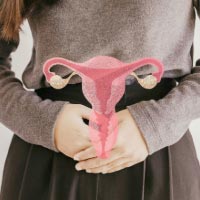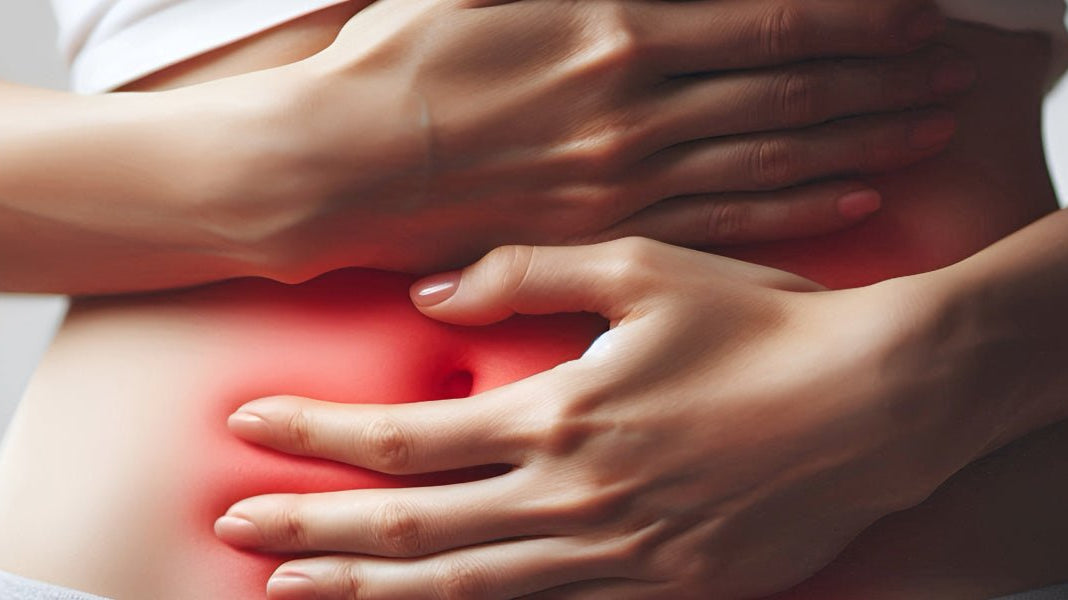What is dysmenorrhea?
Dysmenorrhea, or painful menstruation, affects between 50% and 85% of women. While common, it should not be considered "normal" or acceptable. Just because many experience it doesn’t mean it's healthy. The fact that menstrual pain varies and isn't consistent for everyone suggests there are underlying causes that can be treated.
Menstrual pain intensity and perception vary among women. Some find relief through rest and relaxation, while others endure severe pain that persists even with rest. Pain that disrupts daily life should not be ignored. If menstrual pain is affecting your daily activities, it's important to seek medical attention to identify the cause and explore treatment options.
Remember, menstrual pain is not an unavoidable part of being a woman. With the right diagnosis and treatment, many women can find relief and lead healthier, more fulfilling lives.

Primary Dysmenorrhea or Secondary Dysmenorrhea
Dysmenorrhea, or painful menstruation, comes in two types: primary and secondary. This depends on whether an underlying medical condition causes the pain.
Primary Dysmenorrhea:
This type involves menstrual cramps without a specific medical cause.
It affects up to 85% of women during their reproductive years.
The exact cause is unknown, but it's thought to be linked to hormonal changes and increased levels of prostaglandins, which cause uterine contractions.
Secondary Dysmenorrhea:
This type is due to underlying medical conditions like endometriosis, pelvic inflammatory disease (PID), or fibroids.
These conditions can cause inflammation, scarring, or abnormal growths in the pelvic area, leading to menstrual pain.
While primary dysmenorrhea is often seen as "normal" because it's common, that doesn't mean it's acceptable. If your menstrual pain significantly affects your daily life, it's important to see a doctor to rule out secondary dysmenorrhea and find the right treatment.
With the correct diagnosis and management, both types of dysmenorrhea can be effectively treated, allowing women to have menstrual cycles without severe pain.
Understanding Primary Dysmenorrhea
Primary dysmenorrhea is menstrual pain without any identifiable medical condition. It often starts during adolescence and may improve with age or after pregnancy, though this isn’t always the case. The pain typically centers in the lower abdomen but can also cause lower back pain, nausea, diarrhea, constipation, dizziness, fluid retention, blood clots, headaches, leg pain, sleep and appetite disturbances, fatigue, and depression.
The discomfort can begin with the start of menstruation or a few days before. It usually peaks within 24 hours of menstruation and may last for up to two or three days. The pain can range from burning and cramping to throbbing, dull, and constant.
Primary dysmenorrhea is thought to result from uterine contractions, dilation of the cervix, and reduced blood circulation to the uterus. During menstruation, the uterus contracts to expel its lining, causing cramps. Cervical dilation allows endometrial tissue to pass through but can also cause pain. Reduced blood flow to the uterus may limit oxygen and nutrients, contributing to discomfort.
While primary dysmenorrhea is often seen as a normal part of menstruation, it's important to seek medical help if the pain is severe or disrupts your daily life. Treatment options include pain relievers, lifestyle changes, and hormonal therapy. With proper management, many women can find relief and have a more comfortable menstrual experience.
Understanding Prostaglandins and Menstrual Pain
Prostaglandins (PG) are hormones naturally produced in the uterus that regulate uterine contractions, which are essential for expelling the uterine lining during menstruation. However, excessive production of inflammatory PGs can cause severe cramps and hinder blood flow, sometimes leading to reduced bleeding and the expulsion of endometrial clots.
The body produces PGs in response to inflammation, injury, and stress. Reducing these factors can help manage menstrual cramps. Additionally, the uterus experiences rhythmic contractions during orgasm, usually associated with pleasure, suggesting that menstruation can be a positive experience under favorable conditions.
Several factors influence the menstrual experience, including attitude, emotions, muscle tension, bone structure, and hormonal balance. By addressing these factors and reducing inflammatory PG levels, we can potentially alleviate menstrual cramps and enhance overall well-being during menstruation.

Understanding Secondary Dysmenorrhea
Secondary dysmenorrhea is menstrual pain caused by an underlying medical condition. It usually begins in adulthood, except for cases involving congenital issues like a bicornuate uterus, subseptate uterus, or transverse vaginal septum. This pain tends to worsen over time, starting before menstruation and often lasting even after it ends.
Underlying conditions that trigger secondary dysmenorrhea often involve hormonal imbalances and inflammation. Common causes include:
Endometriosis:
When the tissue that lines the uterus grows outside of it, often in the fallopian tubes, ovaries, or pelvic lining, causing pain.
Uterine Fibroids (Leiomyomas):
Noncancerous growths on the uterine wall that cause discomfort.
Adenomyosis:
Endometrial tissue grows into the muscular walls of the uterus, leading to inflammation and pain.
Pelvic Inflammatory Disease (PID):
A bacterial infection of the female reproductive organs, often sexually transmitted.
Cervical Stenosis:
A narrowing of the cervix, which prevents menstrual blood from flowing freely, causing increased pressure and pain in the uterus.
Other potential causes include ovarian cysts and tumors, intrauterine adhesions, psychogenic pain, and intrauterine devices (IUDs), especially copper ones. Pain may also result from the uterus attempting to expel tissue through a narrowed cervical opening due to previous surgery or scarring. Additionally, submucosal fibroids or endometrial polyps protruding through the cervix can cause pain.
Understanding these causes can help in seeking appropriate medical attention and treatment for more effective management of secondary dysmenorrhea.
Here you can see causes and descriptions:
Ovarian cysts and tumors
Fluid-filled sacs that develop on or in the ovaries or other reproductive organs.
Intrauterine adhesions
Scar tissue that develops in the uterus, which can interfere with the flow of menstrual blood or damage the cervix.
Psychogenic pain
Pain caused by emotional or psychological factors, such as stress, anxiety, or depression.
Intrauterine devices (IUDs)
Small, T-shaped devices inserted into the uterus to prevent pregnancy. Some, such as copper IUDs, can make menstrual cramps worse.
Narrowed cervical opening
A narrowed opening in the cervix, which can make it difficult for menstrual blood to flow out of the uterus.
Submucosal fibroids
Noncancerous growths in the muscle layer of the uterus that can cause pain and cramping.
Endometrial polyps
Growths on the lining of the uterus that can cause pain and irregular bleeding.
SAY GOODBYE TO HORMONAL IMBALANCES!


Rebalance your hormones with Ginevítex®
Ginevítex® is a natural supplement for hormonal balance due to its liquid extract of Vitex agnus castus, a Mediterranean medicinal herb known for its ability to regulate hormones naturally. Ginevítex® is made in Spain.



















